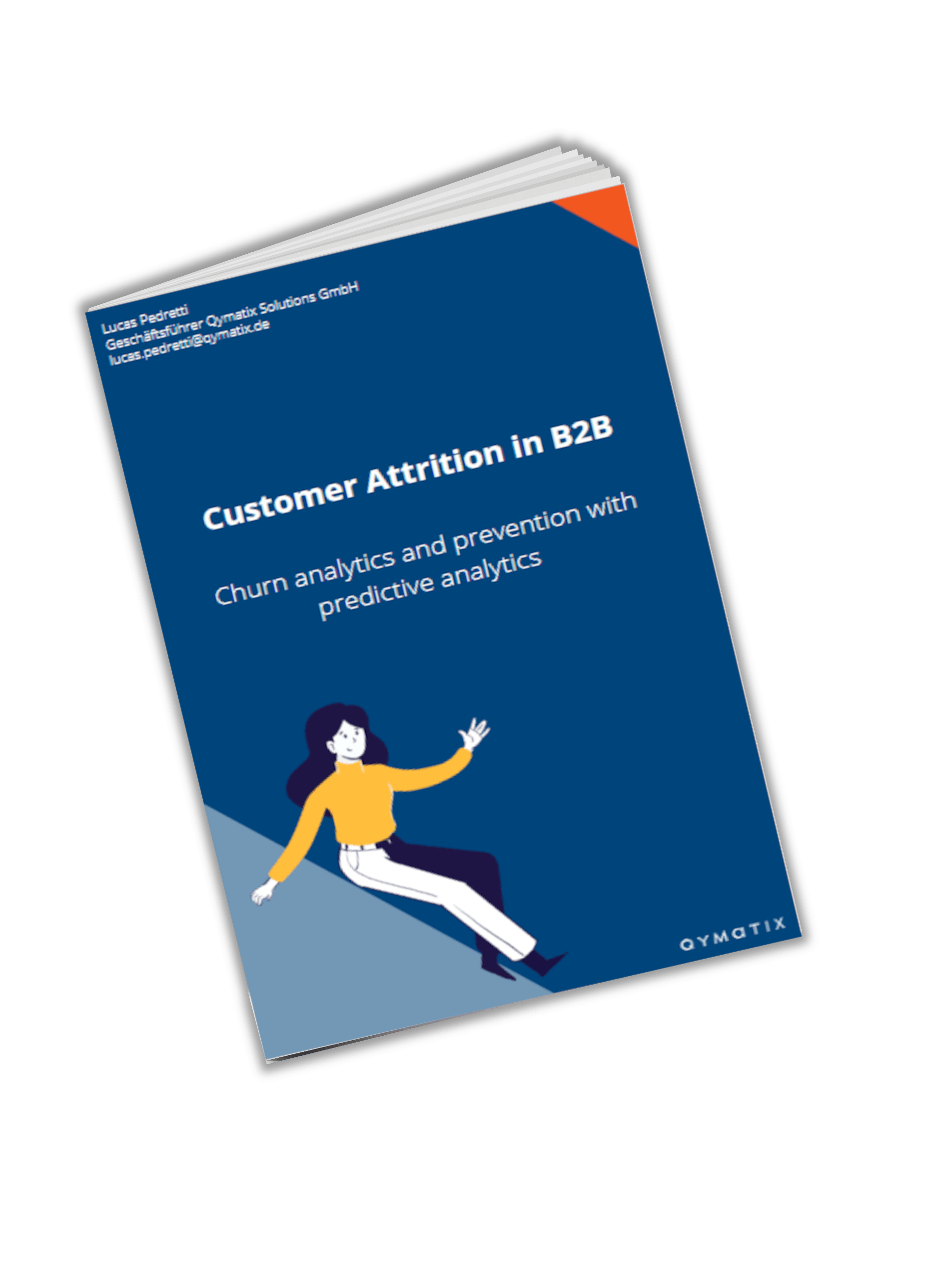How to use Big Data to stop customer churn in B2B | Predicting Customer Churn

Please enter your Email address
Sales leaders in business-to-business (B2B) organisations are under constant pressure to spot new business opportunities.
It is, however, a too often neglected fact, that some of their current customers will churn and recurring revenues will not return.
Besides attracting new customers, succesful B2B firms also direct their efforts into retaining existing ones.
How significant is customer churn, and why experienced sales leaders care about it
In a B2B context, where sales cycles are long, and customer relationships usually breed over several years, qualified sales managers define customer attrition in a way to suits their business model. For some companies, a client churned might be described as a buyer not closing his following deal with them, or a customer inactive for longer than a quarter.
The first step to implementing a retention strategy is to define customer defection in your particular context and to gather data about it, regardless of how “big”.
Second, you can measure over a period how many of your clients have churned. Make this, of course, using a period longer than the one selected to define churn. Beware, measuring customer attrition is a lagging performance indicator.
Lastly, assign a cost of opportunity to each defector. Now you will be able to estimate how much customer churn damages your organisation in particular.
Increasing customer retention rates by 5 % increases profits by 25 % to 95 %. Harvard Business Review.
Your estimation is far from perfect, but it can help you to quantify the monetary benefits of improving customer retention. How can you improve it? Do you know if the customer has defected to one of your competitors? Are you investing in customer retention strategies? Keep in mind that it costs about five times more to acquire a new customer than it does to generate new business from an existing one.
Interestingly, research in the area shows that both the firm pursuing a retention strategy and its customers are better off when the churn rate is lower (Syam and Hess, 2006). The financial benefits might come from both vendor and client rewarding mutual trust.
As a sales leader, it is essential for your role, to quantify and have a close look at customer retention strategies.
I want to use ERP Data to stop customer churn in B2B.
How to reduce the chances of customer attrition and increase retention in B2B?
When it comes to solutions for churn-risk management and prevention based on sales analytics, there is no one-size-fits-all. There are several data analysis approaches a sales leader can take, depending on the data available and the possible corrective measures.
Being able to identify customer churn accurately is essential but worthless unless the results can guide specific actions. Let’s review here two alternative frameworks: customer behavioural signals and customer financial modelling.
1 – Reduce churn based on customer behaviour analysis:
Data from several sets of sales activities will help you to reduce churn based on customer behaviour: customer journey, customer satisfaction, and customer complaints.
Spend time mapping your typical customer journey. Get as much input as you can from your salespeople. Quantify each stage in the journey and then cross this data with customer satisfaction or complaints, customer support cases opened, invoice payment frequency, the number of customer webinars attended, and so on.
The goal is to break-down customer behaviour and to identify those signals with a more significant impact on customer defection. Naïve Bayes can be applied for modelling, intending to reduce it to a bottom line: cost or profit (Provost and Fawcett, 2013).
Both the company developing a retention strategy and the customer are better off when the attrition rate is low.
There are several pros to this approach. First, a few things predict future behaviour better than the preceding one. Second, models are relatively efficient, and their efficacy well-proven. Cons? Gathering customer behaviour data can be expensive for some businesses, and sales leaders might not be able to do anything about it.
CALCULATE NOW THE ROI OF QYMATIX PREDICTIVE SALES SOFTWARE
2 – Reduce churn based on customer financial modelling:
If you have the data, you have the power. Some sales leaders might not have access to reliable customer behavioural data, but most of them have access to the data in their ERP and CRM systems. Based on this hard data, sales leaders can develop predictive models capable of identifying customers with higher probabilities of churning soon.
There are several signals you can use in your data analysis model. For example, cluster your customers based on the combination of products they buy and then find out which one has not yet purchased your latest ones. Ask your salespeople about them. Why haven’t they, however, used a newly introduced product (or service)?
Another signal you can use to improve customer retention is to analyse the overall level of prices your customers pay for your existing products. Is a customer consistently paying pricing way below your average price for a particular product?
Why is that? One reason could be related not to customer attrition, but your pricing strategy: they buy huge volumes and therefore, they pay lower-end prices. However, another reason could be your competitors eroding your prices and thus bringing your customers close to attrition (Tamaddoni et al. 2014).
Two advantages to this approach are the availability of sales data and software tools to perform the analysis. Also, sales leaders are usually in a better position to address the underlying causes of customer defection and thus increase customer retention. Unless using artificial intelligence for predictive modelling, one significant disadvantage here is the lagging nature of the supporting sales data.
Predicting Customer Churn in B2B – Conclusion:
Firms in a business-to-business context can focus on establishing long-term relationships with their customers by adopting appropriate retention approaches, rather than just seeking to acquire new ones.
By pursuing an effective retention strategy, companies can benefit from lower servicing costs, coupled with higher revenues.
Do you have any further questions on Predictive Sales Analytics? We are happy to help!
Free eBook for download: Churn analytics and prevention with predictive analytics
Managing and reducing customer attrition is an essential task of a sales manager. Sadly, sales executives often overlook customer churn in practice.
Download the free eBook now.
- We will use this data only to contact you for discussing predictive sales KPIs. You can read here our declaration on data protection.

Further Read:
Tamaddoni, A., Stakhovych, S. & Ewing, M. 2014. “Managing B2B customer churn, retention and profitability”. Industrial Marketing Management (Impact Factor: 1.93). 07/2014; 43(7).
Provost, F. and Fawcett, T. 2013, “Data Science for Business”. O’Reilly Media.
Gallo, Amy. 2014. “The Value of Keeping the Right Customers”. Harvard Business Review.
Also Interesting about customer churn and attrittion:
How to use software for customer churn to improve customer retention – Qymatix Example
Retain Customers with Artificial Intelligence – Churn Prediction

